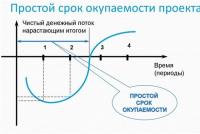Weight unit lb. Kilogram pound - weight unit conversion pounds kilograms weight conversion calculator. weight unit calculator
Please enable Javascript to use the unit converter
›› More information from the unit converter
How many LBS in 1 kg? The answer is 2.2046226218488.
We assume you are converting between pound and kilogram.
You can view more details on each measurement unit:
LBS or
The SI base unit for mass is the kilogram.
1 LBS is equal to 0.45359237 kilogram.
Note that rounding errors may occur, so always check the results.
Use this page to learn how to convert between pounds and kilograms.
Type in your own numbers in the form to convert the units!
›› Quick conversion chart of LBS to kg
1 LBS to kg \u003d 0.45359 kg
5 LBS to kg \u003d 2.26796 kg
10 LBS to kg \u003d 4.53592 kg
20 LBS to kg \u003d 9.07185 kg
30 LBS to kg \u003d 13.60777 kg
40 LBS to kg \u003d 18.14369 kg
50 LBS to kg \u003d 22.67962 kg
75 LBS to kg \u003d 34.01943 kg
100 LBS to kg \u003d 45.35924 kg
›› Want other units?
›› Definition: Pound
The pound (abbreviation: lb) is a unit of mass or weight in a number of different systems, including English units, Imperial units, and United States customary units. Its size can vary from system to system. The most commonly used pound today is the international avoirdupois pound. The international avoirdupois pound is equal to exactly 453.59237 grams. The definition of the international pound was agreed by the United States and countries of the Commonwealth of Nations in 1958. In the United Kingdom, the use of the international pound was implemented in the Weights and Measures Act 1963. An avoirdupois pound is equal to 16 avoirdupois ounces and to exactly 7,000 grains.
›› Definition: Kilogram
The kilogram or kilogramme, (symbol: kg) is the SI base unit of mass. A gram is defined as one thousandth of a kilogram. Conversion of units describes equivalent units of mass in other systems.
›› Metric conversions and more
website provides an online conversion calculator for all types of measurement units. You can find metric conversion tables for SI units, as well as English units, currency, and other data. Type in unit symbols, abbreviations, or full names for units of length, area, mass, pressure, and other types. Examples include mm, inch, 100 kg, US fluid ounce, 6 "3", 10 stone 4, cubic cm, meters squared, grams, moles, feet per second, and many more!
We, in Russia, are used to dealing with kilograms, but in the countries where braiding is developed and manufactured, there is a different system for measuring in pounds (lb). Therefore, in our country, often, the thickness, or rather, the diameter of the braid in millimeters, is indicated on boxes and reels with fishing line. And, in other countries, the strength of a line is measured not by its thickness and diameter, but by the breaking load in pounds, i.e. lb. And nothing can be done about it, you just need to figure it out and understand how to convert pounds to kg and problems with misunderstanding will disappear.
Everything is logical with the braid.
As you know, Western people are more pragmatic than we are. And few people can dispute this. So, in the marking of fishing tackle and accessories, they go towards convenience and practicality.
Agree that it is much more convenient to see the load in pounds, and for them, this is a standard measure of weight, and to estimate whether such a braid is suitable for us. Depending on what kind of fish we fish, and in what conditions.
In Russia, it is customary to name the diameter of the fishing line in millimeters, and when buying a braid, you need to figure out how much power in kilograms such a fishing line will have. For those who have already been fond of spinning for many years, this is not a problem, but for beginners, such marking can become a serious obstacle to choosing the right braid. How to be in such a situation?
How to convert lb to kg
This is more familiar to us. Generally, lb is a weight meter. This is about 454 gr., Or 0.45359237 kg. And, further, the most ancient science - mathematics - enters into law. We just take and multiply the number of pounds and kilograms.
It turns out such a correspondence of the diameter and lb:
6 lb \u003d 2.72 kg
8 lb \u003d 3.63 kg
10 lb \u003d 4.54 kg
20 lb \u003d 9.07 kg
30 lb \u003d 13.61 kg
Following this principle, it is easy to calculate the load in kilograms. But converting lb to millimeters is much more difficult. Because different line with the same diameter will have different power. And for each brand of fishing line - the thickness, with the same breaking load, will be completely different.
That is, the translation of the breaking load into the diameter becomes completely useless and even meaningless. If the breaking load in lb. is clearly indicated on the spool. She needs to use and not “bother” with different translations in mm.
It's no secret that all fishing in the world is measured in measures unknown to an ordinary Russian. Particular confusion arises from the fact that sometimes different names are actually the same, and one can argue for a long time how many libres are in a pound. And then there is the Roman measure, so everything is not the same as it is today.
Line break test, line test for rods and reels is measured in Librach... :) Actually not - in Pounds... The confusion arises from the fact that the abbreviation for the pound is lb (or if there are a lot of pounds lbs), which we used to call librami.
1 lb (1 lb) - 0.453 592 37 kg or 453.59237 g. Roughly - a pound, which is convenient for a first guess in your head, given that such an estimate will be overkill by about 10%. And for a quick and accurate determination, there is a table (rounded):
| lb | 1 | 2 | 3 | 4 | 5 | 6 | 7 | 8 | 9 | 10 |
| kg | 0.450 | 0.900 | 1.360 | 1.815 | 2.270 | 2.720 | 3.175 | 3.630 | 4 | 4.550 |
| lb | 12 | 14 | 16 | 18 | 20 |
| kg | 5.450 | 6.350 | 7.250 | 8.160 | 9 |
Historical reference: The Roman pound is what it is roman librawhere the reduction came from. The weight in grams for the Roman pound / libra is different, so I won't even give it.
Rod lure test, lure weight, float weight test are measured in Ounces(abbreviated oz, from ounce).
1 ounce (1 oz) - 28.349 523 125 g. An ounce is essentially 1/16 of a pound.
Traditionally, weight per ounce is written on boxes of wobblers and squeezed out on jig heads not in absolute numbers, but in fractions of 1/2, 3/5, 5/8 oz, which again completely knocks the brain of an ordinary Russian with a secondary and higher education. Therefore, the table (grams are given in two approximations for convenience):
| oz | 1/32 | 1/24 | 1/16 | 1/12 | 1/10 | 1/8 | 1/7 | 1/6 | 1/5 |
| r | 0,89 1 |
1.18 1.2 |
1.77 2 |
2.36 2.5 |
2.84 3 |
3,54 3,5 |
4,05 4 |
4,73 5 |
5,67 6 |
| oz | 1/4 | 1/3 | 3/8 | 1/2 | 5/8 | 3/4 | 7/8 | 1 | 2 | 3 | 4 | 5 | 6 |
| r | 7,09 7 |
9,45 9,5 |
10,63 10 - 11 |
14,18 14 |
17,72 18 |
21,26 21 |
24,8 25 |
28,35 28 |
56,7 57 |
85,05 85 |
113,4 113 |
141,75 142 |
170,1 170 |
Sometimes there are such inscriptions: 1-1 / 2 oz is actually 1/4 oz, and not (1 oz - 1/2 oz) \u003d 1/2 oz. This is the arithmetic.
Historical reference: The modern common ounce is Ounce of averdupua, 1/16 of a pound averdupua. Is there some more Troy ounceused in jewelry and banking. And there is Roman ounce... Troy and Roman ounces are 1/12 of their own pounds. And of course, all these ounces are not equal to each other, so we don’t want to know and generally forget them until someone is presented with a spinner made of pure gold, then you can stick on it out of happiness and count in troy ounces, for not chala-bola, but gold ...
Postscript: the volumes of liquids are measured in ounces, but here our tradition of measuring the same liquid in grams cannot be reversed. For "well, they write" and "sir, drip 2 ounces, pliz" are two big differences: one is full of meaning, and the second can be the cause of an unreasonable message.
Length and Distance Converter Mass Converter Bulk and Food Volume Converter Area Converter Culinary Recipe Volume and Units Converter Temperature Converter Pressure, Stress, Young's Modulus Converter Energy and Work Converter Power Converter Force Converter Time Converter Linear Velocity Converter Flat Angle Converter Thermal Efficiency and Fuel Efficiency Numeric Conversion Systems Converter of Information Quantity Measurement Currency Rates Women's Clothing and Shoes Sizes Men's Clothing and Shoes Sizes Angular Velocity and Rotational Speed \u200b\u200bConverter Acceleration Converter Angular Acceleration Converter Density Converter Specific Volume Converter Moment of Inertia Converter Moment of Force Converter Torque converter Specific calorific value (mass) converter Energy density and fuel calorific value (volume) converter Differential temperature converter Coefficient converter Thermal Expansion Curve Thermal Resistance Converter Thermal Conductivity Converter Specific Heat Capacity Converter Thermal Exposure and Radiation Power Converter Heat Flux Density Converter Heat Transfer Coefficient Converter Volumetric Flow Rate Converter Mass Flow Rate Converter Molar Flow Rate Converter Mass Flux Density Converter Molar Concentration Converter Mass Concentration in Solution Converter absolute) viscosity Kinematic viscosity converter Surface tension converter Vapor permeability converter Water vapor flux density converter Sound level converter Microphone sensitivity converter Sound pressure level (SPL) converter Sound pressure level converter with selectable reference pressure Luminance converter Luminous intensity converter Illumination converter Computer graphics resolution converter Frequency and Wavelength Converter Optical Power in Diopters and Focal distance Diopter power and lens magnification (×) Electric charge converter Linear charge density converter Surface charge density converter Bulk charge density converter Electric current linear current density converter Surface current density converter Electric field strength converter Electrostatic potential and voltage converter Electrostatic potential and voltage converter Electric resistance converter Converter electrical resistivity Electrical conductivity converter Electrical conductivity converter Electrical capacitance Inductance converter American wire gauge converter Levels in dBm (dBm or dBmW), dBV (dBV), watts, etc. units Magnetomotive force converter Magnetic field strength converter Magnetic flux converter Magnetic induction converter Radiation. Ionizing Radiation Absorbed Dose Rate Converter Radioactivity. Radioactive Decay Radiation Converter. Exposure Dose Converter Radiation. Absorbed Dose Converter Decimal Prefix Converter Data Transfer Typography and Image Processing Unit Converter Timber Volume Unit Converter Calculating Molar Mass Periodic Table of Chemical Elements D. I. Mendeleev
1 pound \u003d 0.453592369999999 kilogram [kg]
Initial value
Converted value
kilogram grams of exagrams petagrams teragrams gigagrams megagrams hectograms decagrams decigrams centigrams milligrams micrograms nanograms picograms femtograms attograms daltons, atomic mass unit kilogram-force sq. sec / meter kilopound kilopound (kip) slug lbf sq. sec / ft lb troy pound ounce troy ounce metric ounce short ton long (imperial) ton assay ton (US) assay ton (imperial) ton (metric) kilotone (metric) centner (metric) centner American centner British quarter (US) quarter (brit.) stone (USA) stone (brit.) ton pennyweight scruple carat grand gamma talent (dr. Israel) mina (dr. Israel) shekel (dr. Israel) bekan (dr. Israel) gera (dr. Israel) talent (O. Greece) mine (O. Greece) tetradrachm (O. Greece) didrachm (O. Greece) drachma (O. Greece) denarius (O. Rome) ass (O. Rome) codrant (O. Rome) lepton ( Dr. Rome) Planck mass atomic mass unit electron rest mass muon rest mass proton mass neutron mass deuteron mass Earth mass mass of the Sun berkovets pood Pound lot spool fraction of quintal livre
Bitcoins and other digital currencies
More about mass
General information
Mass is the property of physical bodies to resist acceleration. Mass, in contrast to weight, does not change depending on the environment and does not depend on the force of gravity of the planet on which this body is located. Mass m determined using Newton's second law, according to the formula: F = mawhere F is power, and a - acceleration.
Mass and weight
In everyday life, the word "weight" is often used, when they speak of mass. In physics, weight, in contrast to mass, is a force acting on a body due to the attraction between bodies and planets. Weight can also be calculated using Newton's second law: P= mgwhere m is mass, and g - acceleration of gravity. This acceleration occurs due to the gravitational force of the planet, near which the body is located, and its magnitude also depends on this force. The acceleration due to gravity on Earth is 9.80665 meters per second, and on the Moon it is about six times less - 1.63 meters per second. So, a body weighing one kilogram weighs 9.8 Newtons on Earth and 1.63 Newtons on the Moon.

Gravitational mass
Gravitational mass shows what gravitational force acts on a body (passive mass) and with what gravitational force a body acts on other bodies (active mass). When increasing active gravitational mass body, its force of attraction also increases. It is this force that governs the movement and position of stars, planets and other astronomical objects in the universe. The ebb and flow are also caused by the gravitational forces of the Earth and the Moon.
With magnification passive gravitational mass the force with which the gravitational fields of other bodies act on this body also increases.
Inert mass
Inertial mass is the property of a body to resist movement. It is precisely because a body has mass that a certain force must be applied to move the body or change the direction or speed of its movement. The more inert mass, the more force you need to apply for this. Mass in Newton's second law is precisely inert mass. The gravitational and inert masses are equal in magnitude.
Mass and the theory of relativity
According to the theory of relativity, gravitating mass changes the curvature of the space-time continuum. The greater this mass of a body, the stronger this curvature around this body, therefore, near bodies of large mass, such as stars, the trajectory of light rays is curved. this effect in astronomy is called gravitational lenses. On the contrary, far from large astronomical objects (massive stars or their clusters called galaxies), the movement of light rays is straightforward.
The main postulate of the theory of relativity is the postulate that the speed of light propagation is finite. Several curious consequences follow from this. First, one can imagine the existence of objects with such a large mass that the second cosmic speed of such a body will be equal to the speed of light, i.e. no information from this object can get into the outside world. Such space objects in the general theory of relativity are called "black holes" and their existence has been experimentally proven by scientists. Secondly, when an object moves with a near-light speed, its inertial mass increases so much that the local time inside the object slows down in comparison with time. measured by a stationary clock on Earth. This paradox is known as the "twins paradox": one of them is sent into space flight at near-light speed, the other remains on Earth. Upon returning from a flight twenty years later, it turns out that the twin astronaut is biologically younger than his brother!
Units
Kilogram
In SI, mass changes in kilograms. The kilogram is determined based on the exact numerical value of Planck's constant hequal to 6.62607015 × 10⁻³⁴, expressed in J s, which is equal to kg m2 s⁻¹, and the second and meter are determined by the exact values c and Δ ν Cs. The mass of one liter of water can be approximately considered equal to one kilogram. The derivatives of kilogram, gram (1/1000 kilogram), and ton (1000 kilograms) are not SI units, but are widely used.
Electron-volt
Electronvolt is a unit for measuring energy. It is usually used in the theory of relativity, and the energy is calculated by the formula E=mc², where E is energy, m - mass, and c is the speed of light. According to the principle of equivalence of mass and energy, the electron volt is also a unit of mass in the system of natural units, where c is equal to one, which means that mass is equal to energy. Electron volts are mainly used in nuclear and atomic physics.
Atomic mass unit
Atomic mass unit ( and. eat.) is intended for the masses of molecules, atoms, and other particles. One A. e. m is equal to 1/12 of the mass of an atom of a carbon nuclide, ¹²C. This is approximately 1.66 × 10 ⁻²⁷ kilograms.
Slug
Slags are used primarily in the British imperial system of measures in the UK and some other countries. One slug is equal to the mass of a body that is accelerating one foot per second per second when a force of one pound-force is applied to it. This is approximately 14.59 kilograms.
Solar mass
Solar mass is a measure of mass used in astronomy to measure stars, planets and galaxies. One solar mass is equal to the mass of the Sun, that is, 2 × 10³⁰ kilograms. The mass of the Earth is about 333,000 times less.
Carat
Carats measure the mass of precious stones and metals in jewelry. One carat is equal to 200 milligrams. The name and the value itself are associated with the seeds of the carob tree (in English: carob, pronounced "carob"). One carat used to be equal to the weight of the seed of this tree, and buyers carried their seeds with them to check if the sellers of precious metals and stones had cheated them. The weight of a gold coin in ancient Rome was equal to 24 carob seeds, and therefore carats were used to denote the amount of gold in an alloy. 24 carats is pure gold, 12 carats is a half-gold alloy, and so on.

Gran
The Gran was used as a measure of weight in many countries before the Renaissance. It was based on the weight of grains, mainly barley, and other popular crops at the time. One grain is equal to about 65 milligrams. That's a little over a quarter of a carat. Until carats became widespread, grains were used in jewelry. This weight measure is used to this day to measure the mass of gunpowder, bullets, arrows, and gold foil in dentistry.
Other units of mass
In countries where the metric system is not adopted, the mass measures of the British imperial system are used. For example, in the UK, USA and Canada, pounds, stones and ounces are widely used. One pound equals 453.6 grams. Stones are mainly used only to measure a person's body weight. One stone is approximately 6.35 kilograms, or exactly 14 pounds. Ounces are mainly used in cooking recipes, especially for small portions. One ounce is 1/16 of a pound, or approximately 28.35 grams. In Canada, which formally converted to metric in the 1970s, many products are sold in rounded imperial packaging, such as one pound or 14 fluid ounces, but have metric weights or volumes. In English, this system is called "soft metric" (eng. soft metric), in contrast to the "rigid metric" system (eng. hard metric), which indicates the rounded weight in metric units on the packaging. This image shows “soft metric” food packaging, showing weight in metric only and volume in both metric and imperial units.
Do you find it difficult to translate a unit of measurement from one language to another? Colleagues are ready to help you. Post a question to TCTerms and you will receive an answer within a few minutes.
The measure of weight pound, pound, pondus is not very familiar to the inhabitants of Russia, since it is mainly used in England and English-speaking countries, and therefore the conversion of weight units from kilogram to pound and back weight in pounds to kilograms causes a certain problem. The pound (pound) comes from the Latin word pondus, which means weight, weight and is used to measure units of weight and mass. In English-speaking countries, the Latin word libra was used before the introduction of pounds pondus, but the abbreviation lb (libra) is still used in some places. Also, in a number of countries with the English language, there is a pound monetary unit, such as pound sterling, and also derived from the Latin word libra. The measure of weight pound (pound pondus), which is now used in America and England, is equal to 16 ounces of weight or in the metric system of weight 453.592374495300 grams. Our script for converting weight units from pounds (pound pondus) to kilograms and should not be confused with the troy pound, which is used as a pharmaceutical measure of weight in England, equal to 12 troy ounces or in the metric system 373.241718913976 grams. Or with measures of weight in pounds (pound pondus), which were used earlier in russia, sweden and austria, when in russia before the revolution the pound weight was equal to 32 lots or 409.512030787770 grams of the metric system, pound used in sweden (Swedish pound) was equal to 425 grams, and the Austrian pound by weight was equal to 560.01 grams of the metric system. Also, in some countries you can find the term metric pound, which is written in the Netherlands as pond, in Germany it is designated Pfund, and in France livre, while everywhere the metric pound is equal to 0.5 kilograms or 500 grams. Concluding our description of the pound (pound pondus) measure of weight, we recall once again that our script converts kilograms to pounds (pondus) and vice versa, which are used as a measure of weight in England and America and the pound is 453.592374495300 grams rounded to 4 decimal places ...
weight unit calculator
To convert weight units to kilogram pounds, you need to enter the number you need in the kilograms or pounds field and press the arrow to calculate and convert weight units among themselves.






